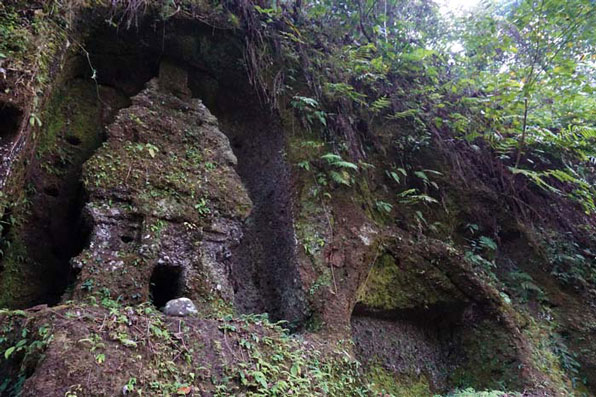Locked between the stands of verdant jungle, the pure waters of the Pejeng and Pakerisan streams gurgle their way over rocks and convoluted water courses. These two rivers form a holy rectangular area that is home to many ancient monuments.
This area was once alive with monks and seers. “Rishis” or holy men came from India, drawn by a shining light, rather like the three wise men. They established temples and shrines in remote, beautiful energy spots. Tombs and meditation hermitages were carved out of solid rock, providing refuge and peace.
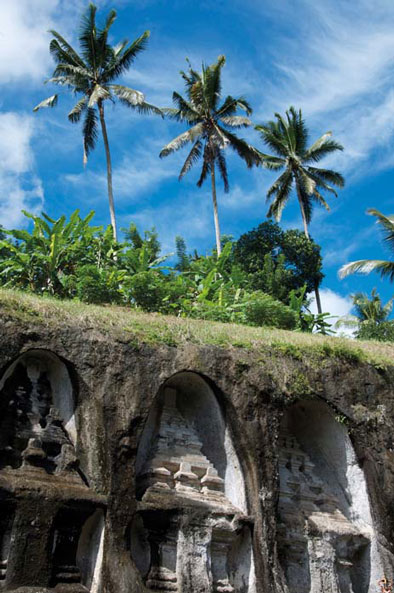
Now, many lay languishing and almost forgotten while some, like the Gua Gajah and the magnificent Tampaksiring complex, are still well-known and visited by tourists. The others are hidden away, only known to the local folk and the archaeologists. Scattered along the banks of the pristine Pakerisan River, these archaeological treasures still exude a strong and mystic energy. Many of these earlier shrines are Buddhist, as Buddhism arrived in Indonesia well before the advent of Hinduism.
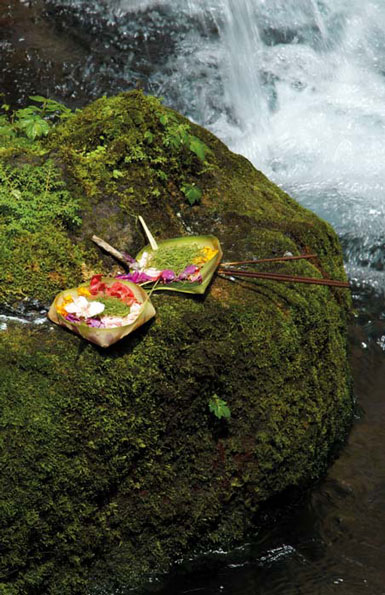
Even the Goa Gajah (elephant cave) only became known to Westerners in 1923. At that time it was buried beneath mud and volcanic ash just like the ancient Buddhist shrine of Borobodur in Java. It is thought to date from the 11th century, like many of the shrines along the Pakerisan.
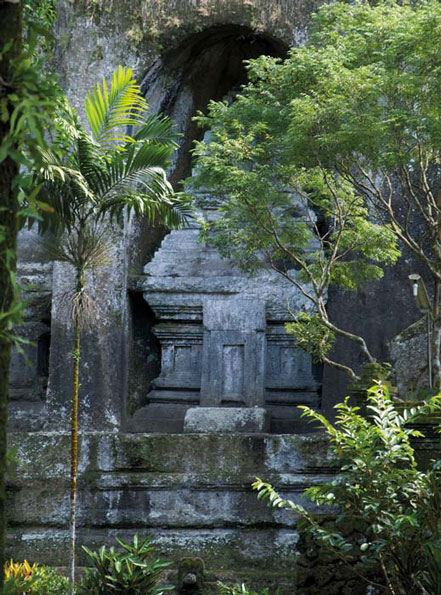
Here the Buddhist and Hindu areas are separate, and I remember when visiting this site many years ago that there were stone Buddha statues strewn all over the long grass. Steps lead down to the main temple while further below are the Buddhist remnants.
The small meditation cave that lies behind the gorgeously carved façade of an elephant, probably Ganesha, is decorated with niches, which no doubt held Buddha and Shivaite statues and icons. This whole complex, like many of the others, resonates with the sound of running water, a theme often repeated in Bali’s Thirtha (holy water) culture. Further below in a verdant ravine lies a small stream with a huge toppled Buddha Statue, a holy spring and more shrines.
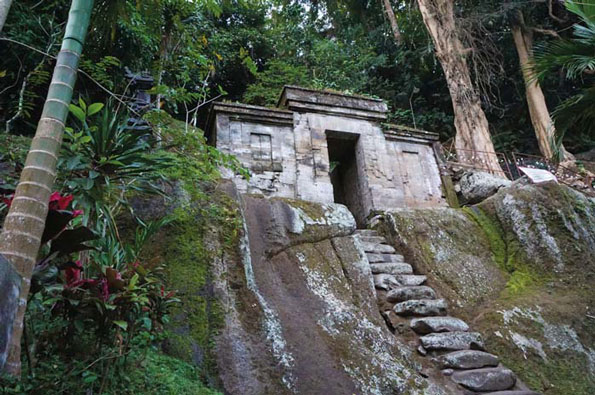
This part of the area has been classified as a UNESCO World Heritage Site, however it is not well publicised. In the citation for World Heritage, eight sites in this area are listed, the most important being Pura Tirta Empul – Bali’s most revered holy spring – Goa Gajah Cave and Pegulingan Temple. The “Temple of the Giants”, Pura Pengukur-ukuran by contrast is not well known and visited very seldom, but it is one of the most intriguing sites.
Others are even less known, like the Gua Garba, a truly wonderful place that inspires all who are lucky enough to visit. Only the façade and the meditation caves remain, while a much newer temple rises behind it. But lost here in the jungle, it was a place of meditation.
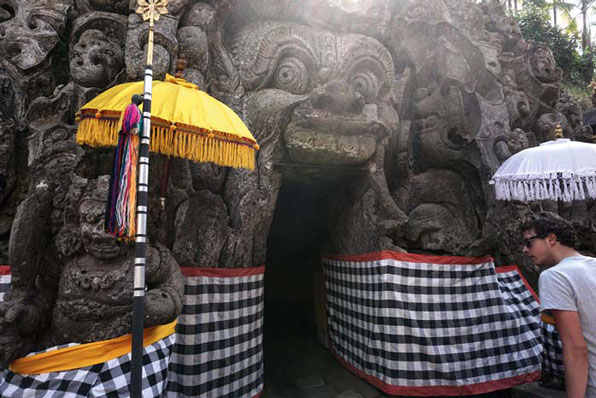
It was purportedly built around the 12th century AD during the reign of King Jayapangus based on inscriptions, although personally, I would guess it is another 11th century relic. The huge stone staircase leading up to the square stone entrance could have been built for a giant. Huge boulders are placed to make the steps a challenging walk for one of normal size.
Further along the Pakrisan is the Candi Tebing, a miniature version of the Gunung Kawi temple, where a single candi is hewn out of the rock face wall. Surrounded by forest and singing birds and a holy spring, it is both mysterious and inexplicable.
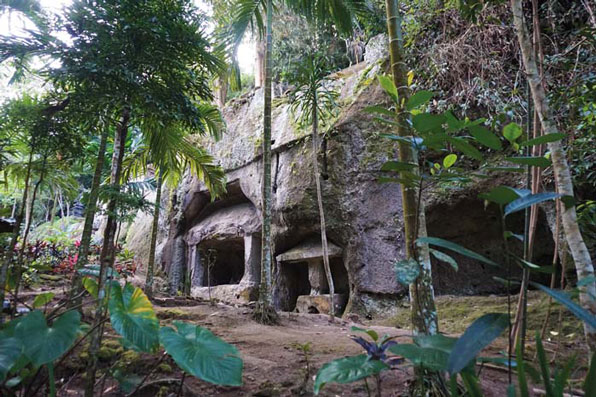
A little further north is the much more well known Tirta Empul complex. Like most Balinese temples, it is laid out in three mandalas, or concentric circles. While the inner mandala represents heaven, the middle circle represents the world of human beings, and the outer circle, the environment. It is a different concept to western thinking, which makes it even more interesting for us visitors.
Those who are interested can walk through the beautiful paddy fields to Pura Pegulingan, near the traditional village of Basangambu. Here in this temple, the Hindu and Buddhist iconography are combined in dedication to the Hindu trinities Shiva, Vishnu and Brahma as well as Mahadeva, the Balinese term for the Buddha. Sadly, most of the Buddhist sections on the lower riverbanks was destroyed in the eruption of Mount Agung in 1963.
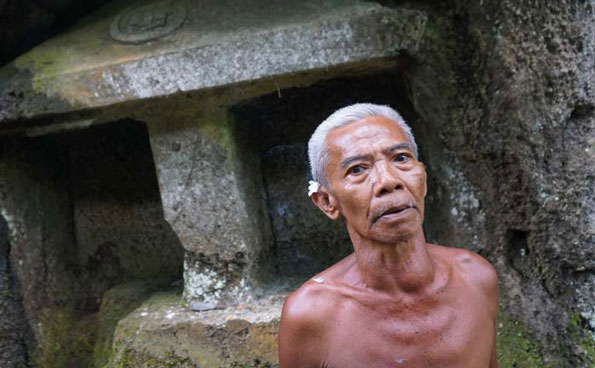
Also, along the Pakerisan River, hidden beneath a deep stone carved staircase, is the magnificent Gunung Kawi Temple. Two rows of royal tombs, hewn from solid rock, they stand as monument to some long forgotten ancient ruler. The river flows though the centre of the complex and once again reiterates, the theme of holy water.
Visiting these temple sites is a two edged sword. On one hand, visitors bring much needed income to the guardians of these holy areas, but at the same time, it could bring less holy energies to the sacred places. So please if you visit them, bring sarongs and a respectful contemplative demeanour.

